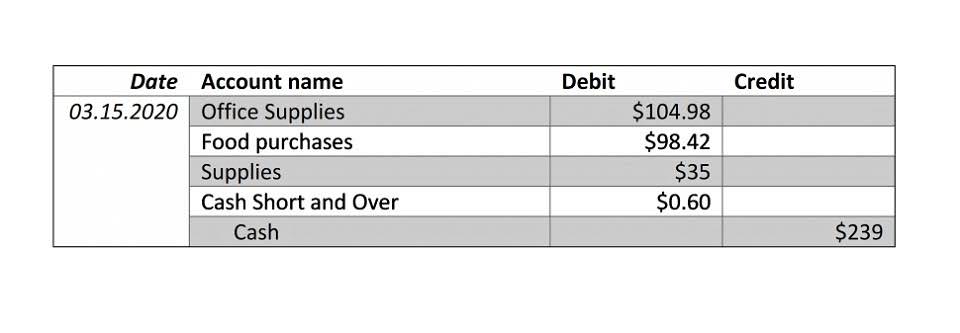4 Ways to Find Scale Factor

Already, the company is partnering with the likes of payment service Square and restaurant software maker Toast. What the business owner really cares about are insights that can guide them forward on a tactical basis,” he said. To date Austin, Texas-based scalefactor has raised $100 million, completing a $10 million Series A round in July of 2018 and a $30 million Series B round in January. ScaleFactor’s 100 employees were told during a town hall Tuesday that half of them would be laid off immediately, and that by the end of August there will be about 10 employees to help wind down the company. Departing employees will receive 12 weeks severance and healthcare until the end of 2020.
- In an interview with Forbes on June 23, the CEO blamed the Covid-19 pandemic for almost halving ScaleFactor’s $7 million in annual recurring revenue as demand from small businesses crumbled.
- The cosmological constant is given the symbol Λ, and, considered as a source term in the Einstein field equation, can be viewed as equivalent to a “mass” of empty space, or dark energy.
- On Thursday, Austin-based ScaleFactor announced it had raised a $30 million Series B funding round to expand its operations, which already serve thousands of small businesses across the country.
- The new funding round follows a Series A round last July when ScaleFactor raised $10 million.
He has over 15 years of analytical experience in industries ranging from health care and transportation logistics to food service and software. Nathan received his MBA in finance and international business administration from the University of Illinois, Chicago, and his B.S. In production and operations management from California State University, Chico. Austin-based fintech startup ScaleFactor has raised a $60 million Series C just seven months after closing its $30 million Series B, and just over a year after closing its $10 million Series A. In total, the company has raised $100 million since last July.
ScaleFactor: Marketing vs Reality
Deeter told Fortune that small businesses can now use many of the same powerful financial analytics tools deployed by large companies. This is largely due to cloud based computing, he said, which makes it easy to market and distribute software into any market, no matter how small. Deeter added that companies like ScaleFactor are emblematic of a trend in which small and medium businesses are incrementally automating their operations.

After their initial failure to automate the bookkeeping process, they tried to pivot to a marketplace for bookkeeping companies and SMEs. After all, ScaleFactor raised money like a tech startup, so they needed to develop a scalable tech product rather than to refine and grow their service business. Unfortunately, burning through $103 million in cash has got to be the hardest way to learn this lesson.
ScaleFactor
These sort of insights are possible because ScaleFactor’s software can monitor and analyze a wide variety of critical financial documents, such as invoices, receipts, and tax bills that provide an overall view of the business. As the software becomes more familiar with the operations, its artificial intelligence is then able to propose strategic operations for the business owner. “This gave them a push for sales,” Stang recalled the ScaleFactor employee saying. He signed the $6,000 contract on June 18 to lock in the discount, even though his first bill wasn’t due until October, according to a copy of the contract seen by Forbes.
In recent weeks, we’ve reported on a number of notable fundings in the space, including Stackin’ raising over $4 million and MoneyLion’s $100 million Series C haul. Another SaaS company in the financial technology space, Gusto, also recently raised a $200 million Series D for its self-described “people platform,” which addresses a number of HR-related functions. “And they don’t traditionally have access to resources that bigger companies do. Ultimately, we want to provide more than just accounting and finance assistance.
ScaleFactor Closure: Clients Seek Rapid Alternatives
Moreover, ScaleFactor employed some creative accounting on their own numbers to boost the perception of growth and to give themselves a more tech-like sales margin (e.g. the customer service officers weren’t accounted for as cost of goods sold). Scale factor is a number by which the size of any geometrical figure or shape can be changed with respect to its original size. When things are too large, we use scale factors to calculate smaller, proportional measurements. It is used to compare two similar geometric shapes and also in other fields like cooking, where the ingredients can be reduced or increased according to the given situation. Scale factor can also be used to find any missing dimensions in similar figures. It is used to draw the enlarged or reduced shape of any given figure and to find the missing length, area, or volume of an enlarged or reduced figure.

As https://www.bookstime.com/ scrambled to add new customers, existing customers were demanding refunds. All rights are reserved, including those for text and data mining, AI training, and similar technologies. While Covid might have been the final nail in the coffin (allegedly it halved the company’s $7M ARR), it’s likely mostly a convenient occasion to close shop and save face – something quite common nowadays (see our article on Quibi’s shut down). Yet, the detachment between ScaleFactor’s goal and the objective reality wouldn’t seem that surprising to a person more familiar with startups. Lindsey Reinders’ business lost $17,000 because of one such error that wasn’t caught for a couple of months. And when she demanded to be compensated, she was offered a partial refund under the condition that she wouldn’t share publicly her customer experience.



